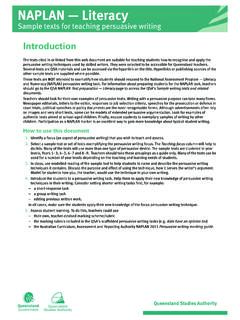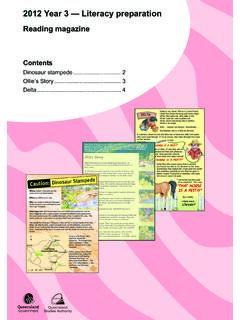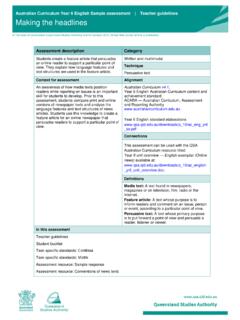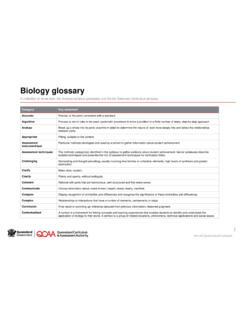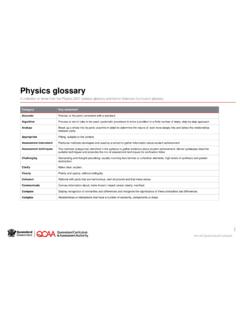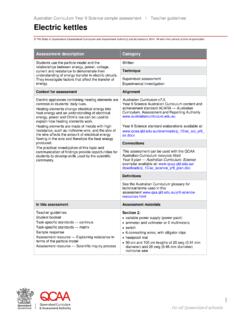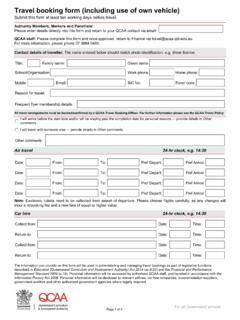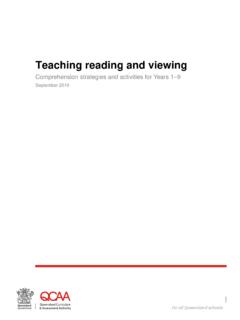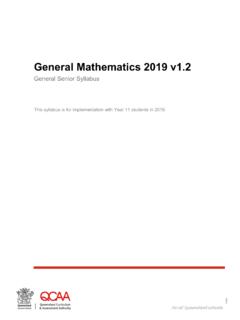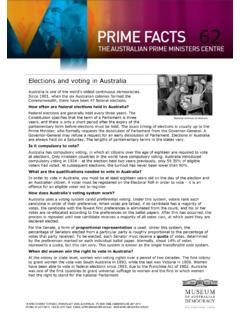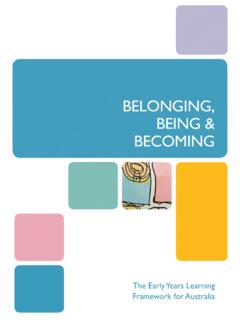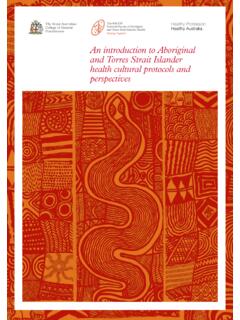Transcription of The history of Aboriginal land rights in Australia (1800s ...
1 Queensland Studies Authority Ground floor, 295 Ann Street Brisbane. PO Box 307 Spring Hill Qld 4004 Phone: (07) 3864 0299 | Fax: (07) 3221 2553 | Email: | Website: Page 1 of 8 Res006 Dec 2007 The history of Aboriginal land rights in Australia (1800s 1980s) This resource is adapted and updated from Commonwealth Government, Aboriginal Affairs background notes: The history of Aboriginal land rights in Australia , AGPS R84/80 Cat. No. 84 145 6 Aboriginal people have led a long struggle over land rights , one which continues today. The beginnings of this struggle began almost a century ago.
2 In the time since, Aboriginal people have led public protests, brought about positive political action, set up a tent on the front lawn of Parliament, and caused positive law reform. This document presents an overview of Aboriginal land rights in Australia in a chronological order, broken up into significant events such as the Bark petition and the Strike at Wave Hill, and separate State-specific discussions. Aboriginal links with land For Aboriginal people, land has a value far beyond its economic potential, as Mr Galarrwuy Yunupingu, Chairman of the Northern Land Council, based in Darwin, expresses it: For Aboriginal people there is literally no life without the land.
3 The land is where our ancestors came from in the Dreamtime, and it is where we shall return. The land binds our fathers, ourselves and our children together. If we lose our land, we have literally lost our lives and spirits, and no amount of social welfare or compensation can ever make it up to us. Many Australian writers have attempted to explain what land means to an Aboriginal person. One of the most eloquent was the late Professor W. E. H. Stanner, who wrote in White Man Got No Dreaming (1979, p. 230): No English words are good enough to give a sense of the links between an Aboriginal group and its homelands.
4 Our word home , warm and suggestive though it be, does not match the Aboriginal word that may mean camp , hearth , country , everlasting home , token place , life source , spirit centre , and much else all in one. Our word land is too spare and Aboriginal would speak of earth and use the word in a richly symbolic way to mean his shoulder or his side. I have seen an Aboriginal embrace the earth he walked on. To put our words home and land together into homeland is a little better but not much. A different tradition leaves us tongueless and earless towards this other world of meaning and significance.
5 European colonisation It has been widely assumed that Aboriginal people accepted colonialism without putting up a fight when, in fact, Aboriginal resistance went on for years and there were many casualties on both sides. However, in the end, Aboriginal spears were no match for muskets. Queensland Studies Authority Ground floor, 295 Ann Street Brisbane. PO Box 307 Spring Hill Qld 4004 Phone: (07) 3864 0299 | Fax: (07) 3221 2553 | Email: | Website: Page 2 of 8 Res006 Dec 2007 Aboriginal missions and reserves The first land which colonial Australia set aside for Aboriginal people was in the form of grants to missionaries.
6 In 1826, 40 km2 of land south of Newcastle on the shores of Lake Macquarie was assigned to the trustees of the London Missionary Society for use as an Aboriginal mission. The creation of large-scale reserves began late in the 19th century. Some Aboriginal people chose to live on the reserves for protection and access to a regular food supply, but many had been forcibly removed from their traditional country and made to live on the reserves. In some cases, these reserves were hundreds of kilometres away from the traditional country of the Aboriginal people who lived on them.
7 Aboriginal people are closely tied to their traditional country emotionally and spiritually, and such relocations have destructive effects on their lives. Government officials saw the reserves as a means of separating Aboriginal people from the wider community. This served the government s purpose of teaching Aboriginal people to act and think like Europeans. Mission and reserve authorities also actively suppressed traditional group organisation and prohibited traditional Aboriginal religious ceremonies. Since the turn of the century, reserve land has often been revoked or alienated and, in some instances, reserves have even been moved to new locations, often to meet the land needs of the expanding European population.
8 These actions have not only been culturally insensitive, but also disruptive and damaging to the lives of Indigenous Australians. Aboriginal protests In the 1930s, Aboriginal people staged the first protests to bring the harsh treatment of Aboriginal people on reserves to the public s attention. During this time , the removal of Indigenous children from their parents was made public, and there were also calls for land rights . The following sections discuss the efforts by the Aboriginal people to have their rights acknowledged. Bark petition Aboriginal people at Yirrkala, situated on the Gove Peninsula in Arnhem Land, were some of the first to take positive political action over land rights .
9 In August 1963, Yirrkala residents presented a Bark petition to the Commonwealth House of Representatives. The text, in the Aboriginal language of Gumaitj, raised their objection at the decision to excise land from the Arnhem Land Reserves for bauxite mining. This excised land had economic and spiritual significance for the Aboriginal people and they were disturbed by the lack of prior consultation. Parliament responded by establishing a parliamentary committee to inquire into the Yirrkala people s grievances. While the report of the committee did not recommend full land rights , it did recommend part-compensation (by way of land grants) for the Aboriginal people.
10 Queensland Studies Authority Ground floor, 295 Ann Street Brisbane. PO Box 307 Spring Hill Qld 4004 Phone: (07) 3864 0299 | Fax: (07) 3221 2553 | Email: | Website: Page 3 of 8 Res006 Dec 2007 No immediate action was taken on the report. However, the Bark petition and the subsequent inquiry did bring the close and unique relationship Aboriginal people have with their land to the Australian public s attention, perhaps for the first time . Strike at Wave Hill In 1966, about 100 Gurindji people lived on the Wave Hill cattle station in the Northern Territory. This was their traditional country and they chose to live there rather than on other large cattle stations in the district.
